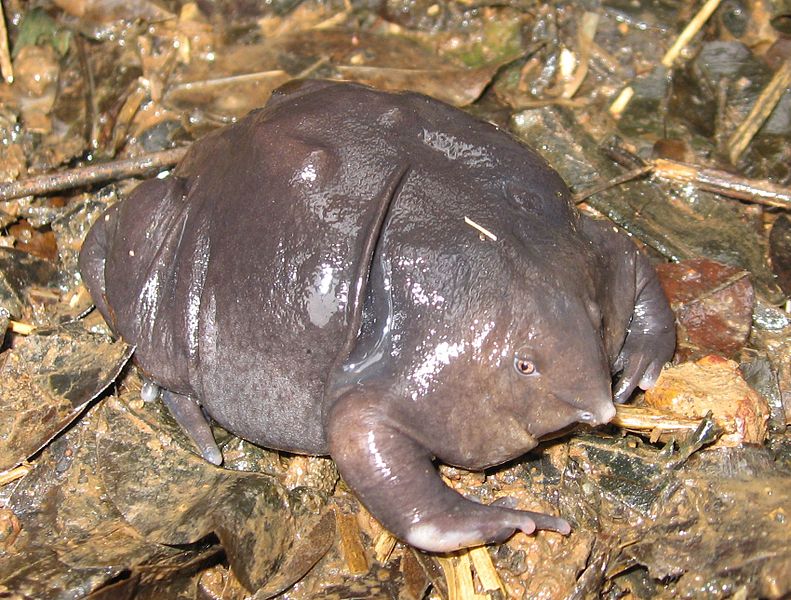Reproduction
The breeding season of Nasikabatrachus sahyadrensis
is based around the monsoon season of the Western Ghats.
Male mating calls begin just before the first monsoonal showers
in late May and continue for approximately one month thereafter
(Raj et al. 2011). The males call from inside their
burrows throughout the night until dawn at a frequency of 1200
Hz and 5-6 pulses per note (Zachariah et al. 2012). To
many the mating call sounds like a chicken. Click
HERE to
view a video of this unique mating call for yourself.
Like other anurans, N. sahyadrensis reproduce by a process called amplexus, sexual reproduction where the male mounts the female from behind. In the case of N. sahyadrensis, males are only one third the size of the females and therefore, must grab onto the females spine while she finds an adequate reproduction site. Once the right environment is found the male N. sahyadrensis then uses his hind legs to push the eggs out of the female before he fertilizes them (Zachariah et al. 2012).
 N.
sahyadrensis are considered explosive breeders because they can
deposit a large number of eggs within a short period of time; 3600
in one night have been reported. Eggs are laid in clumps in
the calm water of the rocky edges of streams. After they
hatch, the tadpoles travel to the faster moving parts of the stream,
in shallow areas over rocks. By moving into fast, shallow
waters the tadpoles increase their chances of survival because
predators struggle to prey on the tadpoles when they are in such a
rapidly moving environment (Zachariah et al. 2012).
N.
sahyadrensis are considered explosive breeders because they can
deposit a large number of eggs within a short period of time; 3600
in one night have been reported. Eggs are laid in clumps in
the calm water of the rocky edges of streams. After they
hatch, the tadpoles travel to the faster moving parts of the stream,
in shallow areas over rocks. By moving into fast, shallow
waters the tadpoles increase their chances of survival because
predators struggle to prey on the tadpoles when they are in such a
rapidly moving environment (Zachariah et al. 2012).
N. sahyadrensis tadpoles pull
themselves into extremely shallow waters at night, where they feed
outside of the water (Zachariah et al. 2012). They have a
wide, flat body with small eyes dorsolaterally set and a wide, flat
snout. The tadpoles have a tale that accounts for two thirds
of its body that is light brown with spots of dark brown areas.
The dorsal side, top, is dark brown while the ventral side, bottom,
is a silvery cream color. Metamorphosis can occur in the
tadpoles within approximately 100 days after hatching from the egg
(Raj et al. 2012).
Life Cycle
According to evidence thus far, it seems the life cycle of N. sahyadrensis is like that of other anurans. The organism begins as an egg which hatches into an aquatic, herbivorous tadpole. Metamorphosis occurs within 100 days after hatching and N. sahyadrensis becomes a mature, terrestrial carnivore, which mates to produce more eggs and start the cycle over again. To learn more about the typical anuran life cycle click HERE.
Go to Interactions
